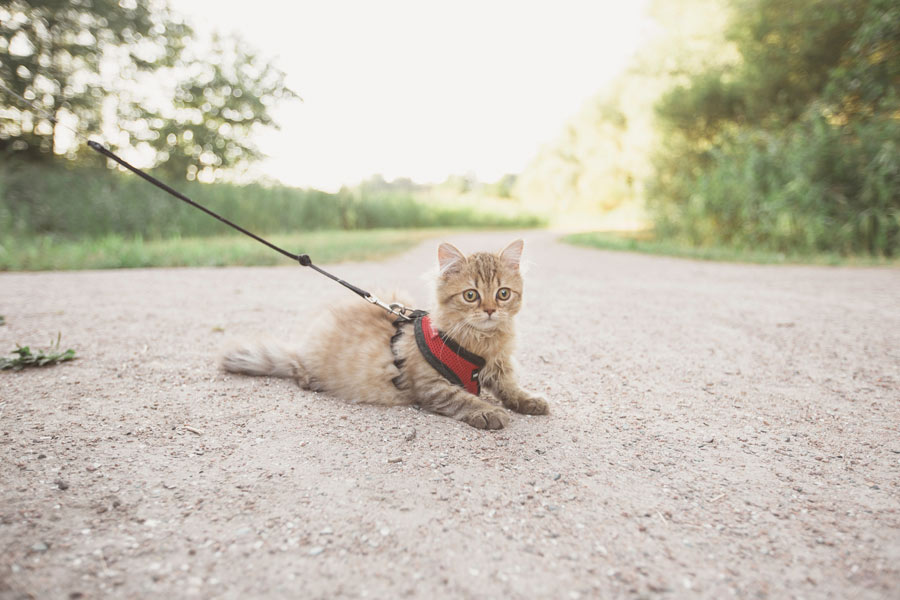Cats can be aloof and harder to read than dogs, so it’s not surprising there are a bunch of myths and rumours surrounding our purring pals. Cat Protection Society NSW CEO Kristina Vesk reveals five of the most common cat misconceptions, helping to sort the facts from feline fiction.
1. Cats have nine lives
“While every cat owner wants to believe that cats have nine lives, unfortunately, our feline friends just have the one. A cat’s anatomy is a big reason why you might think they have nine lives. They have evolved over the years to have reflexes that help them land on their feet. Fast reflexes, dexterity and quick decision-making skills help cats get out of trouble quickly, making it seem like they are experts at evading death,” explains Kristina.
2. Cats should be desexed at six months of age
“A common cat misconception is that you should wait until your cat is six months old before having them desexed ,” says Kristina.
“Wrong! By this age, your kitten could have kittens of her own. To be a responsible pet owner you should always desex your cat. Kittens can be desexed from about eight to 10 weeks old. In fact, young kittens recover more quickly from surgery than older cats. Desexing before sexual maturity can also stop your cat from wanting to fight, “spray” and wander, as well as making them happier and healthier, with a reduced risk of disease including some cancers.”
Image source: Photo by Yerlin Matu on Unsplash
3. Felines don’t like affection
“Photos of cats who look disinterested or angry can be found all over the internet. However, this doesn’t mean they don’t like affection, advises Kristina.
“Cats show their affection in subtle ways, such as through their eyes. When cats close their eyes slightly it is a sign of relaxation and affection, and when they give you a slight head butt, it is a sign they trust you. Cats have very good communication; they use a combination of body language and posture to convey their affection and love for their owners.”
4. Cats always land on their feet
Indeed, when it comes to cat misconceptions, this is a common falsehood.
“Cats are known to be very agile; they are also known to take a big tumble from time to time. Contrary to popular belief though, it’s not high altitudes that cause the most danger to cats, it’s actually the low heights that are the bigger risk. When a cat starts to fall, they begin to shift determining which way their body should face. This is a massive factor as to why they always seem to land on their feet … but they don’t necessarily, so make sure your cat can’t climb out of windows or off balconies,” Kristina explains.
Image source: Photo by Zoë Gayah Jonker on Unsplash
5. Cats don’t go for walks
“A common myth among the animal community is that cats are lazy and do not like physical activity. Cats are not known to walk on leashes like other animals, however, it doesn’t mean that they don’t like it.
“Some breeds of cats love walking on harnesses. Plus, exploring the world outside the four walls they live in helps cats stimulate their minds and also get some exercise. However, not all cats have the temperament to go on a walk, so make sure to always use a harness and build up a cat’s confidence by walking inside first. Homebody cats still love to play games, which can be as simple as playing with some paper scrunched into a ball.”
TOP TIP: How to train your cat to walk on a leash
Kristina says, “Start young and don’t push it. Patience is key when training your cat to walk on a leash, but make sure to look out for signs of discomfort from your cat.
“Always start indoors where your cat is most comfortable and reward with treats whenever you reach a new milestone, such as keeping the harness on for 10 minutes. After this, you can then gradually move to an outdoor area where your cat is comfortable.
“Choose quieter times of day when you train your cat to walk and remember to always be aware of traffic, pedestrians and other animals that are out and about.
“Remember, don’t push your cat – some felines simply don’t like walking on a leash and you don’t want to ruin your relationship by forcing the training.”
What cat myths have you busted?









Leave A Comment